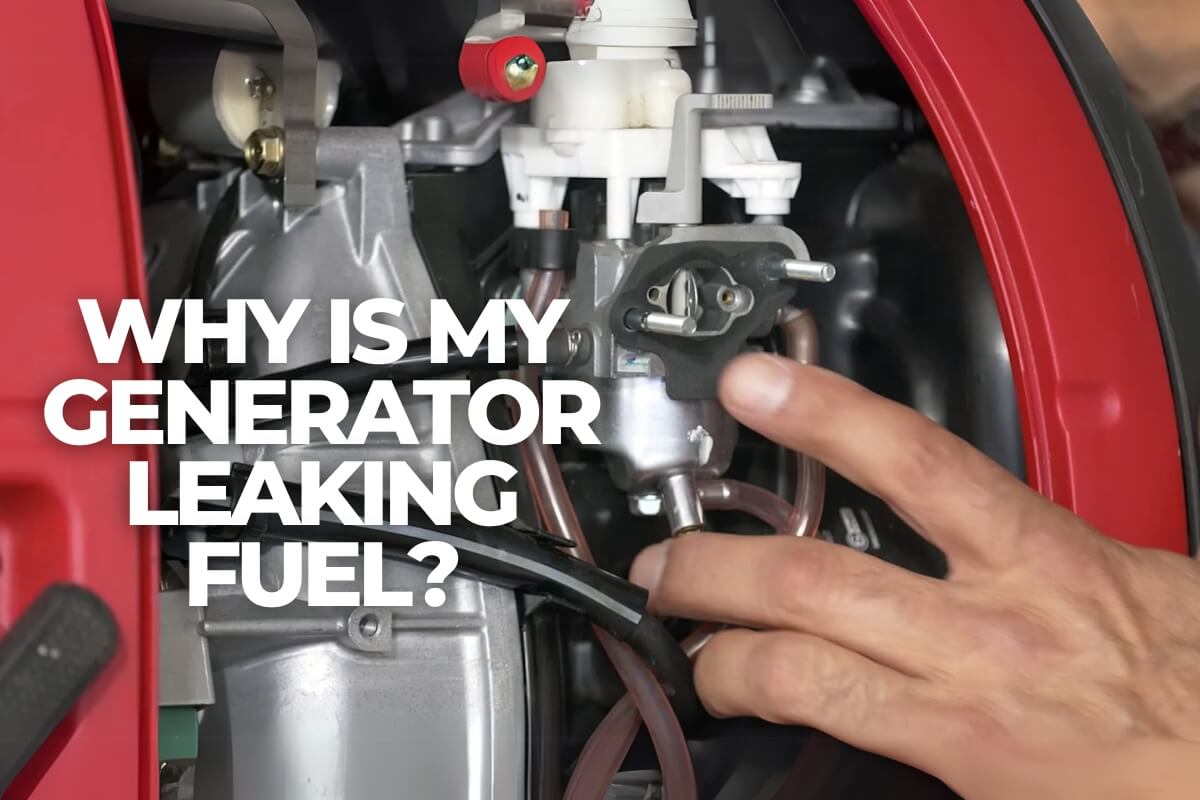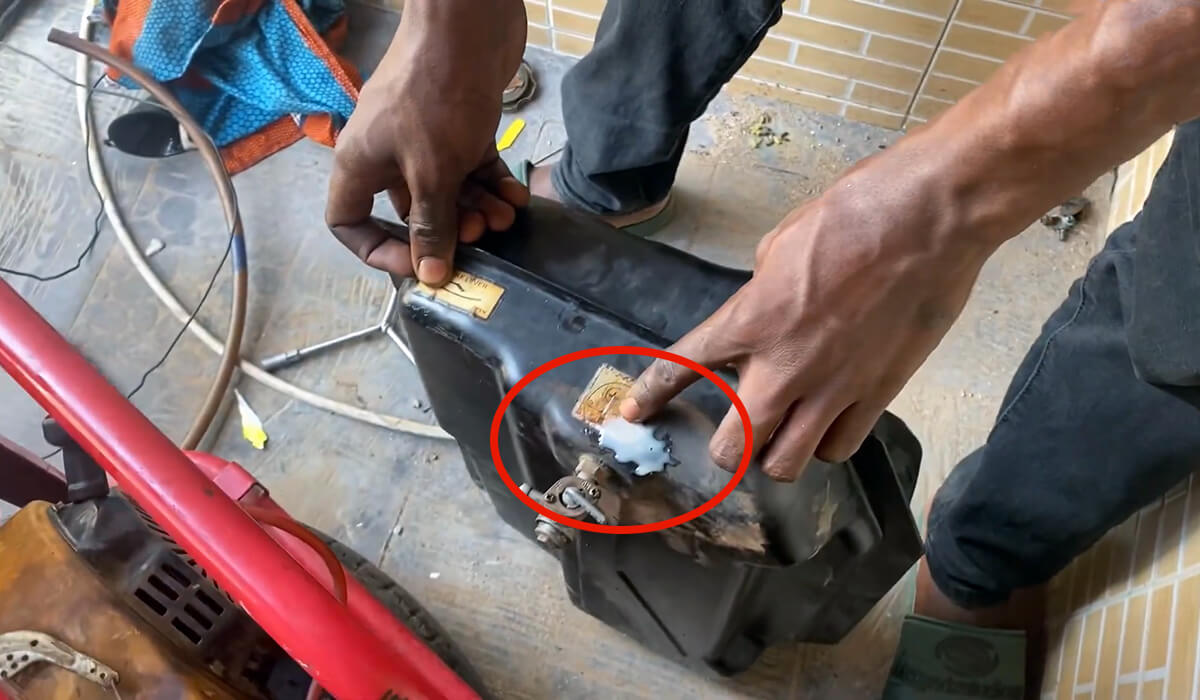Why is my generator leaking fuel?
- BY BISON
Table of Contents
One common problem many people face is fuel leaking from the generator. While it might not seem like a big deal at first, a fuel leak can be dangerous and expensive. Check and fix any leaks as soon as you notice them. Otherwise, significant dangers can result, including fire, explosion, and poisoning.
A variety of factors can cause or exacerbate fuel emissions and their risks. These may include holes in the gas tank, damaged fuel lines, fuel injectors, gas tank cap or vent hose issues, and problems with the fuel pressure regulator. In this article, BISON will discuss the main causes of generator fuel leaks and share some simple solutions.

Common causes of generator fuel leaks
1. Damaged fuel lines and connections
Deteriorated hoses
Over time, rubber or plastic fuel hoses can become brittle, cracked, or softened due to heat, fuel exposure, and age, making them prone to leaking.
Loose or broken fittings
Clamps, connectors, or fittings can become loose, corroded, or broken, causing fuel to seep or spray out.
Vibration damage
Constant vibration during operation can cause fuel lines to rub against other parts, leading to wear or breaks.
2. Carburetor issues
Stuck or damaged float valve
The float valve controls the fuel level. If the fuel is stuck or worn, it can overflow from the carburetor bowl.
Worn gaskets and seals
Gaskets and seals dry out or crack over time, especially the carburetor bowl gasket, which seals the carburetor to the bowl. This gasket undergoes constant heating and cooling, causing it to become brittle and fail.
Incorrect adjustments
Poor tuning or adjustment can cause excessive fuel delivery and leakage.
Fuel varnish buildup
This can cause small carburetor parts to stick, allowing uncontrolled fuel flow.
3. Fuel tank problems
Cracked tank
Even small cracks cause leaks. Plastic tanks can break due to impact or pressure, while metal tanks can rust and develop holes.
Loose cap
A loose or worn fuel cap seal can let fuel vapor or liquid escape.
Overfilling
Filling beyond capacity can cause spills, especially when fuel expands due to heat.
4. Fuel pump failures
Diaphragm issues
Torn or hardened diaphragms cause internal or external leaks.
Broken seals
Worn or cracked seals allow fuel to seep out.
Pressure regulation faults
Excessive fuel pressure can force fuel past seals or flood the carburetor.
5. Cracked or soft fuel filter
Some generators have a plastic fuel filter under the tank or in-line between fuel lines. Cracks or damage cause leaks. Replace the filter if damaged.
6. Faulty shut-off valve
Some have a sediment cup and seal that may need cleaning or replacement. Otherwise, replace the entire valve.
7. Generator primer bulb
The primer bulb rubber can crack and break over time, causing leaks. Replace the bulb if it is leaking; do not attempt repairs.
8. Extended storage issues
Fuel breakdown
Old fuel degrades, forming varnish or gum that clogs passages and damages seals, causing leaks.
Water contamination from condensation
Moisture buildup can corrode parts and displace fuel.
Ethanol effects
Ethanol in fuel attracts moisture and degrades rubber parts faster, causing brittle hoses and gaskets.
Signs of a fuel leak
Finding a fuel leak early can help avoid serious damage or safety risks. Here are some common signs of a fuel leak:
If you notice a puddle of brown oil or wet spots under your generator that look colorful in the right light, it could be a gasoline or diesel leak. Even if there is no visible puddle of oil, a persistent or sudden strong smell of gasoline or diesel around the generator could mean a fuel leak. This could be caused by small oil droplets, vapor leaks, or leaks in an enclosed area.
Leaks can be difficult to spot, especially if the fuel evaporates without leaving wet spots. If your generator is consuming more fuel than normal with no changes in load or usage, it could also be due to a hidden leak.

How to diagnose the source of the leak
Make sure the generator is turned off and cool before inspecting it. If you suspect your generator is leaking fuel, the first step is to find out exactly where the leak is coming from. Here BISON has prepared some simple inspection steps for you:
Start with a visual inspection
Carefully look around and under your generator for any signs of fuel. Check for wet spots, drips, or stains near the base, fuel lines, or engine area. Use a flashlight to see hard-to-reach areas more clearly.
Check the fuel lines and tank
Look closely at the fuel lines that run from the tank to the engine. See if there are any cracks, splits, or worn-out spots. Gently wiggle the lines to check for looseness. Inspect the fuel tank for cracks, rust, or signs of fuel seeping out around the cap or seams.
Inspect the fuel shut-off valve and connections
Find the fuel shut-off valve and check for any fuel residue around it. Look at the fittings and connections leading into and out of the valve. Check them for loose, rusted, or missing seals.
Check the integrity of all fuel hoses and clamps
Visually inspect hoses for cracks or damage. Tighten hose clamps if necessary and touch the hoses to feel for weaknesses or damaged rubber.
Check for rust or damage on the fuel tank
Rust or corrosion can cause leaks, so be sure to inspect the tank thoroughly.
Consider recent refueling
Has anyone refueled the tank recently? Many suspected leaks are caused by an overfilled tank or poor-quality fuel. If possible, consider changing your fuel supplier.
How to fix a fuel leak in your generator
BISON Tips: Before starting any operation, always turn off the generator and allow it to cool completely.
1. Replacing damaged fuel lines
- Prepare the necessary materials: Replacement fuel lines, clamps, and a wrench.
- Locate the damaged fuel line by tracing it from the fuel tank to the engine.
- Use a wrench to loosen the clamps holding the fuel line in place, then remove the damaged line.
- Cut the new fuel line to the proper length and slide it into place.
- Secure the new fuel line with the clamps and tighten them.
- Check for leaks by turning the generator back on and inspecting the new line.
2. Tightening loose connections
- What you’ll need: Wrench or screwdriver, depending on the type of connection.
- Identify the loose connections by checking where fuel lines meet the carburetor, fuel tank, or fuel shut-off valve.
- Use the appropriate tool to tighten any loose screws, bolts, or nuts.
- Once tightened, check for leaks by running the generator.
3. Sealing or replacing the fuel tank
- Replace the fuel tank directly or prepare a sealant (fix small cracks) and empty the tank.
- If there’s a small crack or hole, apply a fuel-safe sealant to the affected area, following the manufacturer’s instructions. A simple fix is to cover the leak with epoxy putty.
- For larger cracks, replace the fuel tank by removing the old tank (unscrew fasteners and disconnect fuel lines), then install the new tank securely.

4. Repairing or replacing worn gaskets
- Prepare the required materials: Replacement gaskets, gasket scraper, and gasket sealant (if necessary).
- Identify worn gaskets, typically around the carburetor or fuel shut-off valve.
- Remove screws or fasteners holding the gasket in place.
- Use a gasket scraper to remove the old gasket carefully.
- Clean the surfaces to remove debris or old gasket material.
- Place the new gasket and reassemble the parts, securing them with screws or fasteners.
- Tighten everything and check for leaks after running the generator.
Note: Replacing gaskets can be delicate. If unsure, consider professional help.
Conclusion
Fuel leaks in generators are a common issue, but they should never be overlooked. For reliable, efficient generators with minimal risk of leaks, trust the quality and service of BISON, a Chinese generator supplier. If you are unsure or have a tricky BISON generator repair problem, we are always available to help you with our experts.
Contact us now to get product information for BISON generators. We have a complete after-sales service system to help you solve various reasons, including damaged components, loose connections, or improper maintenance, which may cause generator fuel leaks.
contact us
related product categories
Get in touch to speak with our experts!



